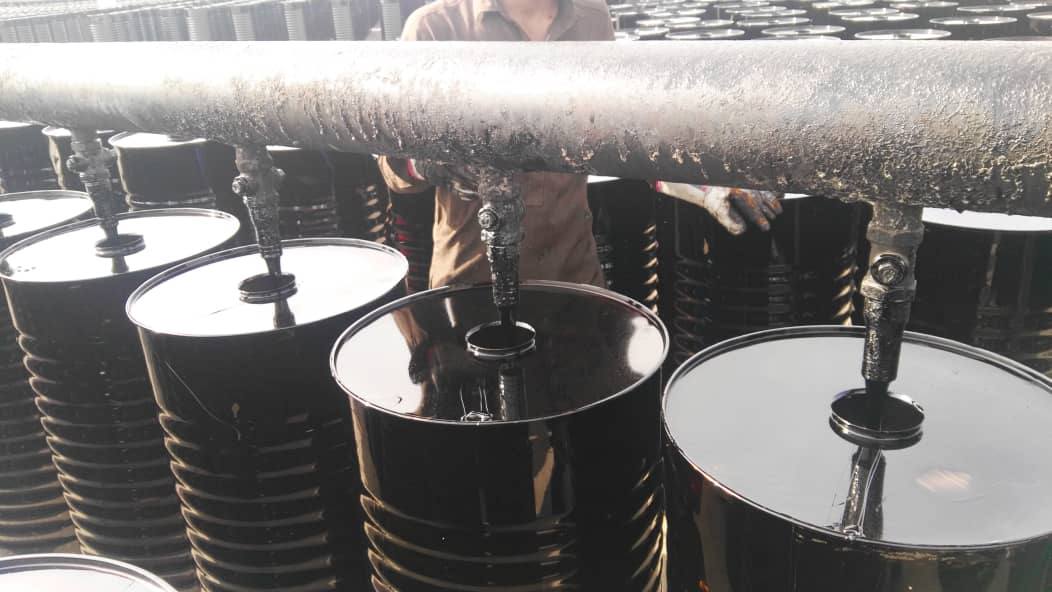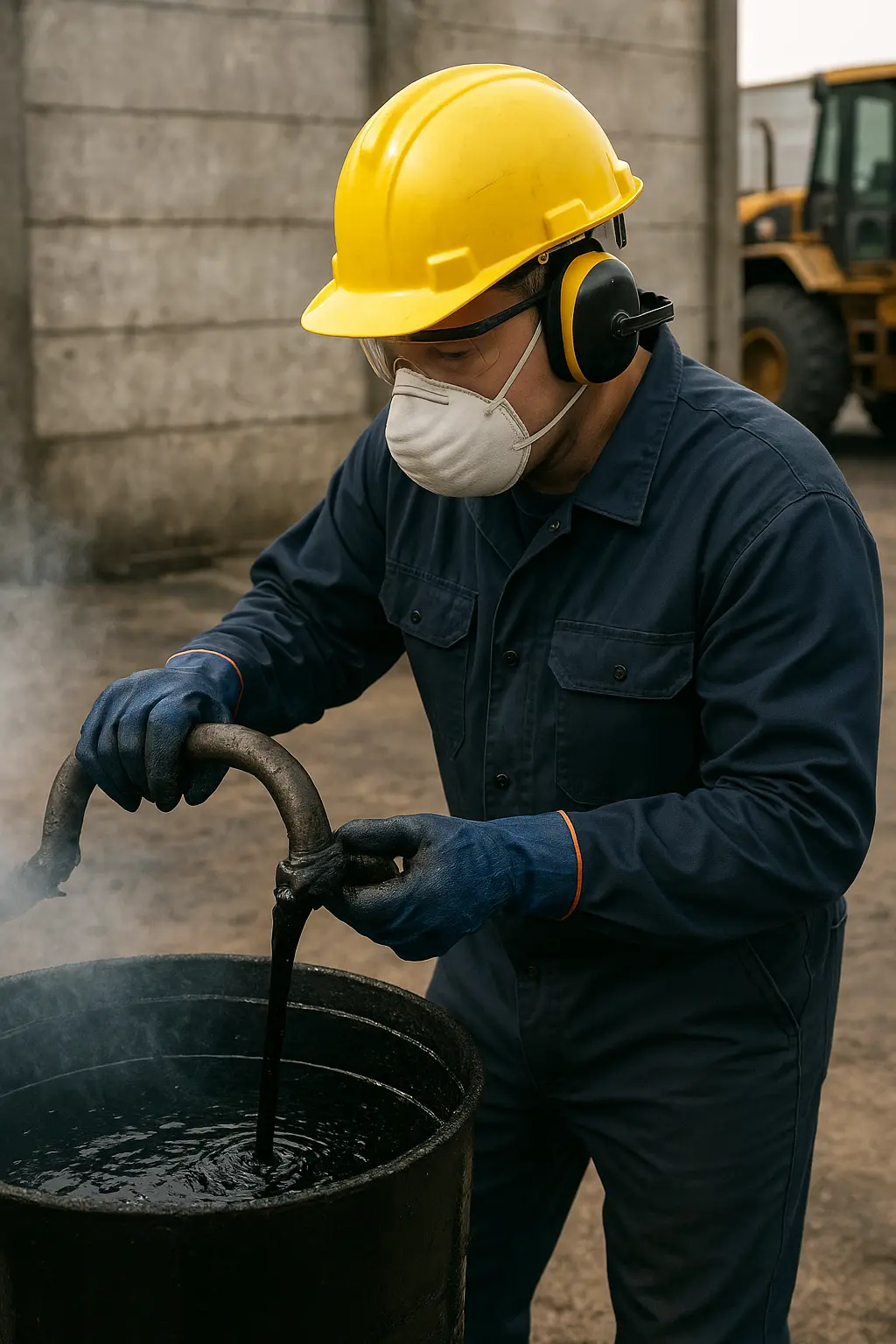
Introduction to Bitumen Penetration Grade 120/150
Bitumen Penetration Grade 120/150, a premium-grade asphalt binder, is a dark brown or black semi-solid or viscous liquid produced through the non-destructive refining of crude oil. As a leading supplier of Bitumen 120/150, we provide high-quality material that serves as the backbone of modern infrastructure, particularly in road construction and industrial applications. This guide explores its properties, uses, packaging options, and why it’s a preferred choice for durable construction projects. (Contact Us)
What is Bitumen 120/150?
Bitumen 120/150 is classified based on its penetration value, which measures the depth (in tenths of a millimeter) a standard needle penetrates the bitumen at 25°C. The “120/150” indicates a penetration range of 120–150, signifying a relatively harder consistency compared to softer grades like 80/100. This balance of strength and flexibility makes it ideal for various climates and heavy-duty applications.
Applications of Bitumen 120/150
Bitumen 120/150, supplied by trusted bitumen 120/150 suppliers, is a versatile material used across multiple sectors:
-
Road Construction: As a key component in asphalt mixes, Bitumen 120/150 binds aggregates to create durable road surfaces. Its robust properties ensure roads withstand heavy traffic and harsh weather conditions.
-
Pavement Preservation: Used in chip seals, slurry seals, and micro-surfacing, it extends the lifespan of existing roads by preventing cracks, reducing water infiltration, and improving skid resistance.
-
Industrial Applications: Beyond roads, Bitumen 120/150 is used in coatings, adhesives, and sealants for roofing, waterproofing, and pipeline protection.
-
Specialized Uses: In regions with moderate climates, it’s ideal for airport runways and parking lots due to its stability and durability.
-
LSI Keywords: Bitumen asphalt supplier, road surfacing material, industrial bitumen uses.
Key Properties of Bitumen 120/150
The unique properties of Bitumen 120/150 make it a preferred choice for construction projects:
-
Penetration Range (120–150): Indicates a harder consistency, providing strength while maintaining flexibility to prevent cracking.
-
Viscosity: Moderate viscosity ensures effective mixing with aggregates, resulting in consistent and durable asphalt mixes.
-
Adhesion: Strong bonding with aggregates enhances road stability, resisting displacement under traffic loads.
-
Durability: Its elasticity accommodates temperature-induced expansion and contraction, ensuring long-lasting infrastructure.
-
Temperature Stability: Performs well in moderate climates, resisting softening in heat and cracking in cold.
|
Property |
Description |
|---|---|
|
Penetration Range |
120–150 (tenths of a mm at 25°C) |
|
Viscosity |
Moderate, ideal for mixing with aggregates |
|
Adhesion |
Strong bonding with aggregates for stable road surfaces |
|
Durability |
Elastic, resists cracking under temperature changes |
|
Temperature Stability |
Suitable for moderate climates, resists softening and cracking |
Image Placeholder: Diagram of Bitumen 120/150 in road construction (Alt Text: “Bitumen 120/150 used in asphalt road construction, showing layers of aggregate and binder”).
-
LSI Keywords: Bitumen properties, asphalt durability, penetration grade asphalt.
Health and Safety Guidelines
When handling Bitumen 120/150, safety is paramount due to its high-temperature processing:
-
Ventilation: Ensure workspaces have ventilation systems maintaining air quality below 0.1 mg/m³ of bitumen fumes to prevent inhalation risks.
-
Protective Equipment: Wear heat-resistant gloves, safety shoes, long-sleeved shirts, long trousers, and safety goggles to avoid burns and exposure.
-
Fire Safety: Keep bitumen away from open flames or sparks. Have fire extinguishers (Class B) on hand during heating and application.
-
Storage Safety: Store in insulated containers to maintain temperature and prevent contamination.

Packaging Options for Bitumen 120/150
As a reliable supplier of Bitumen 120/150, we offer various packaging methods to suit project needs and transportation logistics:
-
Steel Drums (180kg): Durable for international shipping, with 110 drums fitting in a 20-ft container.
-
Bitubags (375kg): Flexible bags for efficient loading, with 24 MT in a 20-ft container.
-
Bulk in Vessels: Ideal for large-scale projects, with capacities of 2,000–20,000 MT in bitumen carriers.
-
Flexitanks: Large, flexible containers holding up to 20,000 liters, perfect for international transport.
-
Tanker Trucks: Bulk transport in 25 MT truck tankers for local delivery to sites with storage facilities.
|
Packaging Type |
Capacity |
Best For |
|---|---|---|
|
Steel Drums |
180kg, 110 per 20-ft |
International shipping, durability |
|
Bitubags |
375kg, 24 MT per 20-ft |
Flexible, efficient loading |
|
Bulk in Vessels |
2,000–20,000 MT |
Large-scale projects |
|
Flexitanks |
Up to 20,000 liters |
International, high-volume transport |
|
Tanker Trucks |
25 MT |
Local delivery, on-site storage |
Comparison with Other Bitumen Grades
Bitumen 120/150 is harder than softer grades like 80/100 but softer than 60/70, making it ideal for moderate climates. Compared to 80/100, it offers greater stability under heavy loads but less flexibility in extreme cold. Against 60/70, it provides better workability but may soften in high heat. Choosing the right grade depends on climate, traffic, and project requirements.
|
Bitumen Grade |
Penetration Range |
Best Use Case |
|---|---|---|
| 60/70 | 60–70 |
Hot climates, heavy traffic roads |
| 80/100 | 80–100 |
Cold climates, flexible pavements |
| 120/150 | 120–150 |
Moderate climates, durable surfaces |
Environmental Considerations
Sourcing Bitumen 120/150 from eco-conscious bitumen 120/150 suppliers ensures sustainability. Modern refining techniques reduce emissions, and recycling asphalt pavements minimizes waste. Using Bitumen 120/150 in warm-mix asphalt technologies lowers energy consumption during application, aligning with green construction trends.
FAQs About Bitumen 120/150
Q: What is Bitumen 120/150 used for?
A: It’s primarily used in road construction, pavement preservation, and industrial applications like coatings and sealants.
Q: How does Bitumen 120/150 compare to other grades?
A: It’s harder than 80/100, offering better stability, but softer than 60/70, providing more flexibility in moderate climates.
Q: What are the storage requirements for Bitumen 120/150?
A: Store in insulated, sealed containers at 120–150°C to maintain viscosity and prevent contamination.
Q: Why choose a reliable supplier of Bitumen 120/150?
A: Trusted suppliers ensure consistent quality, proper packaging, and compliance with safety and environmental standards.
Contact Us for Bitumen 120/150 Supply
As a leading supplier of Bitumen 120/150, we provide high-quality products tailored to your project needs. Contact us for quotes, samples, or technical support:
Address: Dubai Office: No. 2305 of the Burlington Tower, Business Bay, DUBAI-UAE
Phone: +(971) 4 566 4998
Mobile: +971 (50) 940 9246
E-mail: info@bitukim.com
Ready to enhance your infrastructure projects with premium Bitumen 120/150? Reach out today to discuss your requirements!
Specification of Bitumen Penetration Grade 120/150
| BITUMEN 120/150 | TEST METHOD | UNIT | SPECIFICATION |
|---|---|---|---|
| Specific gravity @ 25/25 °c | ASTM D70 | Kg/cm³ | 1000-1050 |
| Penetration @ 25°c | ASTM D5 | mm/10 | 120-150 |
| Softening point °c | ASTM D36 | °C | 38 min |
| Ductility @ 25°c | ASTM D113 | cm | 100 min |
| Loss on heating(wt) % | ASTM D6 | wt % | 0.5 max |
| Drop in Penetration after heating % | ASTM D5-D6 | % | 20 max |
| Flashpoint °c | ASTM D92 | °C | 218 min |
| Solubility is CS2(wt) % | ASTM D4 | wt % | 99 max |
| Spot test | A.a.s.h.o.t102 | - | Negative |

